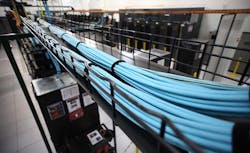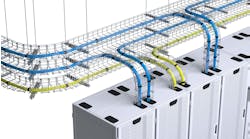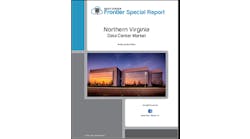Automating Fiber Cross Connects: Ready for Today, Prepared for Tomorrow
Bob Shine, VP Marketing and Product Management at Telescent, explores the ins and outs of automating fiber and how new systems are arising to successfully automate the fiber layer.
Bob Shine, VP of Marketing and Product Management, Telescent
One key outcome of the COVID pandemic is that it accelerated IT and data center trends by several years. Digital transformation that was expected to take years to materialize happened in just months during the pandemic. This acceleration has caused data center managers to reevaluate their operations, and automation has become a key consideration. As stated by Rich Miller in a recent article on the Eight Trends that will Shape the Data Center Industry in 2021, “the rapid embrace of data center automation is about to enter a new phase, in which automation and robotics play a larger role in facility management.” This comment is supported by a recent Uptime Institute survey that found that 73% of data center managers expect to increase their use of automation because of the pandemic. One process where automation could improve performance and reduce costs is fiber interconnections in multi-tenant data centers (MTDCs).
While COVID has certainly created a renewed interest in automation, it is worth asking why fiber interconnections haven’t been automated already. After all, every other level in the optical network stack has seen improvements by introducing software management and automation, but the physical fiber layer has remained a “dumb pipe.” As will be discussed below, new technology must offer benefits across a company before it can be implemented. There must be technical benefits for the network architect, financial benefits for the CFO, operational improvements for the engineering team and so forth.
Finally, the new system must not just offer benefits today, it must be capable of scaling to meet the demands of tomorrow. If one of these groups has doubts, it is always easy to justify “just doing things the way we know how.” However, there are now automated cross connect systems that meet all these needs today and can grow to meet the scale required in the future. And “just keep doing the status quo” has never been a winning long-term strategy for technology companies.
Before introducing any new technology, any change in operations needs to be economically justified. While introducing robotics and automation to MTDCs certainly has a “cool factor” for the network architects, the project must also get approved by the CFO and then implemented by the operations team. Business plans for introducing automation are typically justified by the reduced operational expense involved in the manual process.
In one study, Cisco found that network automation reduced OpEx by 50 to 70% which led to a very favorable ROI. Similar results have been found for automation of the fiber cross connect, with a payback of between 2 to 3 years on the 10+ year lifetime of the equipment. A pay-as-you-grow design is preferred since this can match expenses to revenue as the equipment is deployed. While the business case is typically justified by the OpEx savings since these savings are easy to quantify, there are also many other benefits to automation of the cross connect. These include improved fiber management and avoidance of full cable trays, improved customer service through faster turn-on of services, better inventory management, improved troubleshooting and reduced outages caused by operator error. Getting humans out of the process leads to operational and performance benefits.
While the financial justification is a major concern, MTDC operators must consider other factors before introducing any new equipment into the network. As demonstrated with the COVID pandemic, data centers are critical infrastructure and reliability of the infrastructure is a key concern. Before any new equipment is installed in the network, it must pass rigorous reliability and performance testing. The gold standard for reliability testing is the NEBS Level 3 qualification. Passing NEBS Level 3 certification ensures that the system has been independently tested under a variety of operating conditions and will be able to meet the customer expectations. Added concerns are whether the system preserves the connections during a power outage, if the system is field-maintainable and if the system offers diagnostic capability about its status and the network.
With all the requirements listed above, now it is easier to understand why the fiber layer hasn’t been automated in the past – systems meeting these requirements just didn’t exist.
Once the automated cross connect system passes the financial and reliability hurdles, the next step is to consider implementation. For remote control, the automated cross connect must be integrated into the existing operational software, so some software integration is required. This integration can be relatively straightforward through REST APIs or command line control and is typically performed in about one man-month’s effort. As mentioned previously, a design that allows a pay-as-you-grow implementation is preferred since this aligns the capital expense with the revenue. Of course, this growth path must allow any-to-any connectivity rather than segmenting or blocking connections due to the growth path.
Telescent NTM in a data center. (Photo: Telescent)
Implementation will be different if the robotic cross connect is being deployed in a greenfield opportunity versus a brownfield facility. For a new data center, the use of the robotic cross connect is very straightforward as all customers would be connected to the system. Starting with the robotic cross connect also provides all the benefits of the system to be realized from the beginning. In an existing facility, the implementation approach would likely be a cap-and grow approach. In this approach, new connections are made with the robotic cross connect. As customer connections churn and new connections to service providers are requested, the percentage of customers on the manual cross connect would decrease over time until all of the connections can be done with the robotic cross connect. While in this case the benefits build over time based on the interconnection churn rate, the decision to begin the implementation does improve operations incrementally with the first connections (inventory error, overflowing cable trays, manual errors…).
Finally, while a greenfield opportunity might begin with a few hundred cross connections, the multi-tenant data center is built to scale to have several thousand to over 20,000 connections depending on location. For this reason, the automated cross connect system must be able to seamlessly scale to this level of connectivity as well. It is not just this level of connectivity that the system must handle, it must be able to manage all the reconfigurations that occur over time. One of the problems with the manual or semi-automated approach to cross connects is the challenge that reconfigurations caused over time. In considering a robotic cross connect, it is important to understand what the system will look like not just initially, but after managing several thousand or more reconfigurations over the life of the system.
With all the requirements listed above, now it is easier to understand why the fiber layer hasn’t been automated in the past – systems meeting these requirements just didn’t exist. But now new systems meeting these requirements exist, like the Telescent Network Topology Manager (NTM) — a NEBS Level 3 certified automated cross connect system that offers complete cross connect lifecycle management. Systems like these monitor, map and control the network during installation, reconfiguration and churn of cross connects to enable a Lights-Out Data Center with machine accurate inventory while preserving the value of the installed fiber plant.
To end with another quote from the article cited in the first paragraph, Justin Dustzadeh, Chief Technology Officer at Equinix, said, “Anything that can be automated should be automated through software. Digital growth and acceleration are here to stay, and with that realization comes the need for digital leaders to embrace the technologies and trends that will give their organizations a clear advantage.”
Now is the time to make the dumb fiber pipes smarter through automation.
Bob Shine is the VP of Marketing and Product Management at Telescent.





